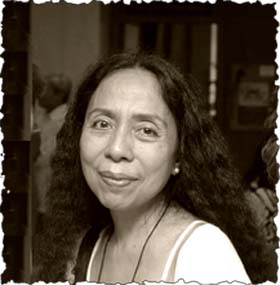 |
| Julie Lluch |
| (b. 1946) |
On the art walk, people first paid attention to Julie Lluch because of her clay and terra cotta sculptures—while she stood out in a group show at Solidaridad Galleries and, in 1977, with her first Sining-Kamalig solo exhibition reaping much critical praise. Lluch became the byword because of her clay busts of Filipino literary masters, including Nick Joaquin and Jose Garcia Villa. Clay is a sensuous medium says Lluch—”soft, obedient, and pleasurable to the touch”—leaving the artist free to work with her hands. It’s also a form of resistance, she argues, serving as a protest against high art. She began using it in the early 70s because of its durability. But it draws her more because of her sculptor’s intuition than the ceramist’s spunk in rattling off its chemical properties. In all faith, Lluch declares that the “medium is universal because it practically covers the earth.” Shot entirely in bucolic Sta. Maria, Bulacan—where the artist lived for a year—the 25-minute film combines elements of the documentary and the experimental film. Of this film Lluch says: “ ‘Yuta’ depicts the artist plumbing the subconscious, meeting herself in dreams, stepping into the cleansing fire, and intimating death. Nature is her accomplice whose forces she summons like sorcery. The film teems with symbols, sensuous and subliminal.” |
©Ateneo Library of Women's Writings 3/F-Rizal Library Annex Ateneo de Manila University Loyola Heights,1103 Q.C., Philippines |
